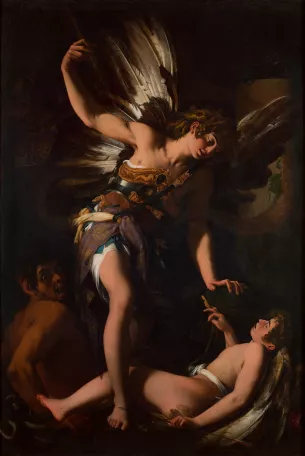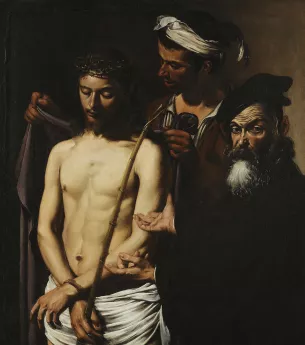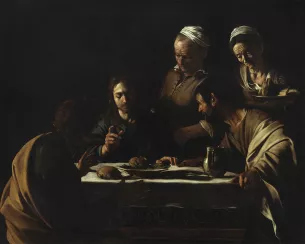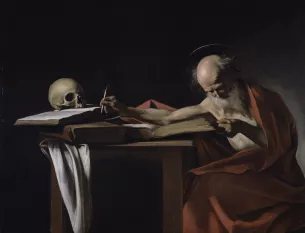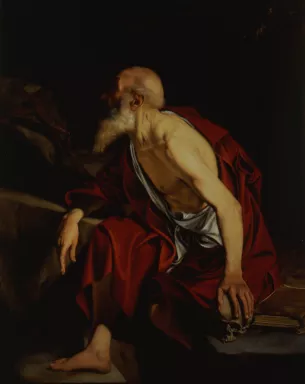ONLINE BOOKING STRONGLY RECOMMENDED. Due to the high number of visitors to the exhibition, access cannot be guaranteed for visitors without tickets.
Exhibition
Caravaggio's Roman Period
His friends and enemies
In the autumn of 2018, discover an exhibition devoted to Caravaggio (1571–1610), a leading figure in 17th-century Italian painting. Nine masterpieces by the artist will exceptionally be brought together for this unique event in Paris.
An exhibition event
These extraordinary canvases from major Italian museums—such as the Galleria Nazionale in Palazzo Barberini, the Galleria Borghese and the Musei Capitolini in Rome, the Pinacoteca di Brera in Milan, the Musei di Strada Nuova in Genoa, and the Museo Civico Ala Ponzone in Cremona, not to mention the prestigious loan of the Lute Player (1595-1596) from the Hermitage Museum of St. Petersburg, presented in France or the first time. Nine Caravaggio will retrace Caravaggio’s Roman period from 1592 until he fled into exile in 1606. They will be complemented by the works of leading contemporary painters, such as Cavaliere d’Arpino, Annibale Carracci, Orazio Gentileschi, Giovanni Baglione, and José de Ribera, in order to highlight Caravaggio’s innovative genius and the artistic effervescence that reigned in the Eternal City at the time.
An exceptional artist at the heart of the roman artistic scene
Born in 1571, Michelangelo Merisi, whose byname was Caravaggio, revolutionised Italian painting in the 17th century through the realism of his canvases and his innovative use of chiaroscuro, and became the greatest naturalistic painter of his time.
The exhibition will focus on Caravaggio’s Roman period and the artistic circle in which he moved: as the most recent studies have shown, the painter maintained close relations with the contemporary intellectual circles in Rome. The exhibition will therefore look at Caravaggio’s links with the collectors and artists, and also the poets and scholars of his time—links that have never been highlighted in an exhibition.
The exhibition will initially focus on life in Rome at the beginning of the seventeenth century, by looking at the artistic activity in the major workshops, in which Caravaggio began his career. It was during this period that Caravaggio met various figures who were to play a key role in his career: Marchese Giustiniani (1564–1637) and Cardinal Francesco Maria del Monte (1549–1627). They became Caravaggio’s foremost patrons and he received many prestigious commissions from them. After looking at Caravaggio’s friends and supporters, the exhibition will focus on his enemies and rivals who were also part of the art scene in Rome at the time. Caravaggio—the painter did not want other artists to imitate his style, but this did in fact occur—sometimes clashed with his confrères during discussions, lawsuits, and even brawls.
His career in Rome ended in 1606, when Caravaggio killed Ranuccio Tomassoni during a heated discussion. Condemned to death after this fatal brawl, Caravaggio fled into exile but his most loyal patrons continued to take an interest in his work.
The team
Curatorship
Francesca Cappelletti is professor of the history of modern art at the University of Ferrara and is also a member of the scientific committee of the Istituto di Studi Rinascimentali (Institute of Renaissance Studies). In 1987, she graduated from the University of Rome ‘La Sapienza’ with a thesis on painting in Rome at the end of the quattrocento, and subsequently studied at the Warburg Institute in London and the Collège de France in Paris. She then focused her attention on a study of the practice of collecting art in Italy—from the Renaissance to the nineteenth century—, and her research work on the famous Galleria Doria Pamphilj in Rome was used for the reorganisation of the collection in 1996.
Pierre Curie is chief curator of heritage. Specialist of Italian and Spanish painting of the XVIIth century, he has also worked on the French painting of the XIXth century at the Musée du Petit Palais, where he started his career. Then in charge of the painting at the General Inventory, he has co-authored and led the Vocabulaire typologique et technique de la peinture et du dessin (published in 2009). Appointed head of the painting sector of the restoration department for the Centre de recherche et de restauration des Musées de France in 2007, he coordinated and followed some major restorations of paintings of national museums (Leonardo da Vinci, Titian, Rembrandt, Poussin...). Currently director of the Revue de l’Art, Pierre Curie is curator of the Musée Jacquemart-André since January 2016.
Production
Milly Passigli, appointed director of Culturespaces’ Exhibitions in Italy, Agnès Wolff, Cultural Production Manager, Eléonore Lacaille and Federica Fruttero, Exhibition managers at the Musée Jacquemart-André, Amélie Carrière and Aude Chaufourier, Regisseurs at Culturespaces and Livia Lérès, Responsible for iconography at Culturespaces.
Scenography
Hubert le Gall is a French designer, creator and sculptor of contemporary art. Since 2000 he has produced original scenographies for exhibitions, such as for the Musée Jacquemart-André : Rembrandt in confidence (2016), From Zurbaran to Rothko, Alicia Koplowitz Collection (2017), The Hansen’s Secret Garden, the Ordrupgaard collection (2017) and Mary Cassatt, une impressionniste américaine à Paris (2018).

